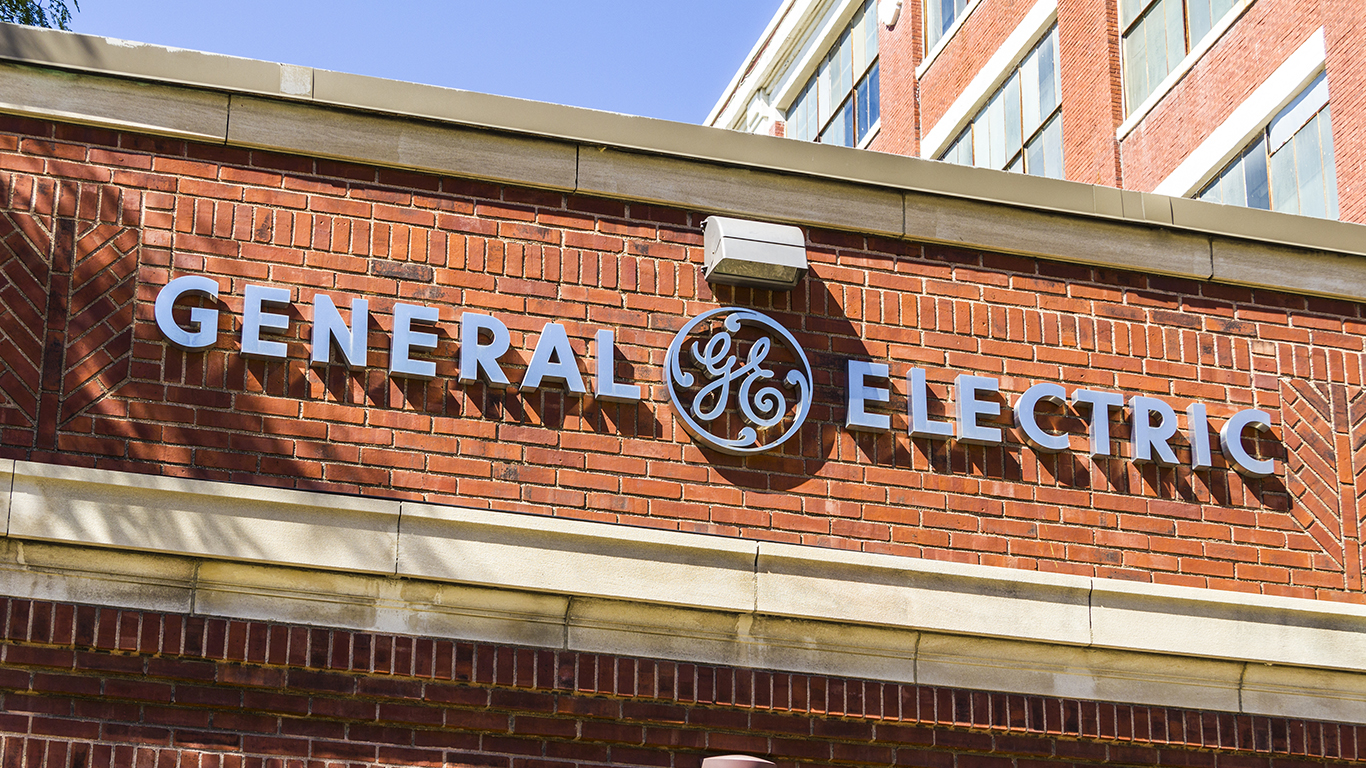Industrials
After GE to Sheds Divisions, Shrinks Revenues, What's Left?

Published:
Last Updated:

General Electric Co. (NYSE: GE) announced Tuesday morning its plan to focus on its Power, Aviation, Renewable Energy and GE Capital businesses while it sells or spins off its Healthcare, Oil & Gas, Transportation and Lighting businesses. Based on 2017 revenues, GE’s plan chops about $40 billion in sales from a total of around $125 billion.
The company has already shed its Distributed Power, Industrial Solutions and Value-Based Care divisions and has agreed to combine its Transportation business with Wabtec Corp. (NYSE: WAB) in a new company. These deals have substantially achieved CEO John Flannery’s promise to divest $20 billion in assets.
GE also plans to spin off its Healthcare business and to separate Baker Hughes, a GE Company (NYSE: BHGE) over the next two or three years. The Lighting business has already been pared down, and the company had no more to say about its fate although it has been seeking a buyer for more than a year.
CEO Flannery commented:
GE’s mission and technology change the lives of billions of people around the world. We will now move forward with purpose to make our company simpler and stronger and accelerate growth across our businesses. I’m confident that today’s actions, in conjunction with other changes we have already made, will produce improved operating results and increased shareholder value going forward. We are focused on executing the strategy and implementing the structure we’ve laid out today to position our businesses for future growth.
The company said it will spin off 80% of GE Healthcare and retain a 20% stake in the company. The spin-off will be tax-free to current GE shareholders. The company expects to complete the separation over the next 12 to 18 months.
The separation of Baker Hughes is trickier. As a condition of its acquisition, GE cannot sell its 62.5% stake in the oilfield services firm until mid-2019. The company offered no details on how the separation may be achieved.
GE is also implementing a new management model it calls the GE Operating System that it expects to yield better execution, faster decision-making, and “at least $500 million” in cost savings at the corporate level by the end of 2020.
The company also said it would maintain its quarterly dividend at current levels until GE Healthcare is established. What happens after that and the proposed separation of Baker Hughes was not discussed, although a lower payout seems inevitable.
Based on 2017 revenues, what GE is keeping is about $85 billion in revenues, or slightly more than two-thirds of revenues for the company’s current eight segments. Recent history shows that turning a profit with that many moving parts no longer works. If the company can make money by operating at a smaller scale, it’s doubtful that investors will complain.
Shares traded up about 7% in late Tuesday morning, at $13.64 in a 52-week range of $12.61 to $27.59. Tuesday is also the first day that the company is not included in the Dow Jones industrial average index in more than a century.
Credit card companies are pulling out all the stops, with the issuers are offering insane travel rewards and perks.
We’re talking huge sign-up bonuses, points on every purchase, and benefits like lounge access, travel credits, and free hotel nights. For travelers, these rewards can add up to thousands of dollars in flights, upgrades, and luxury experiences every year.
It’s like getting paid to travel — and it’s available to qualified borrowers who know where to look.
We’ve rounded up some of the best travel credit cards on the market. Click here to see the list. Don’t miss these offers — they won’t be this good forever.
Thank you for reading! Have some feedback for us?
Contact the 24/7 Wall St. editorial team.